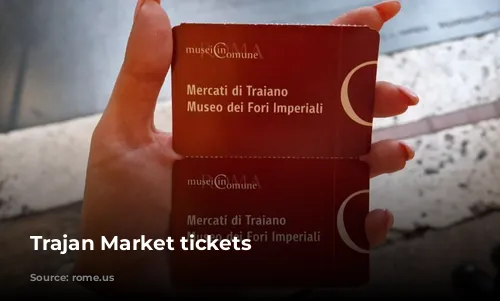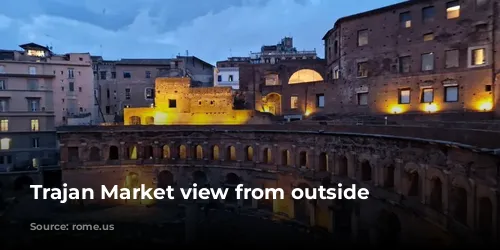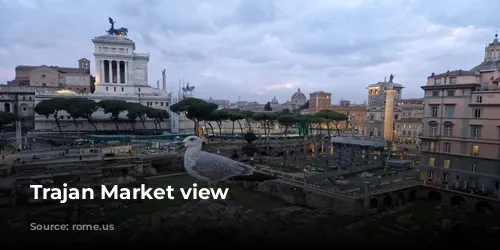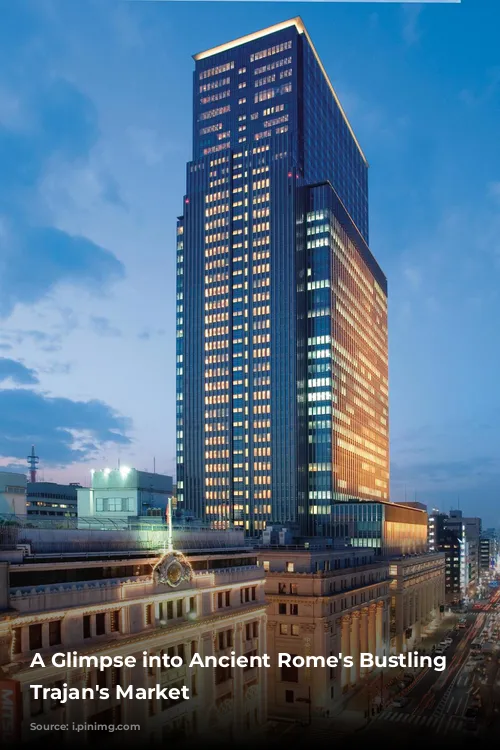Step back in time and journey to the heart of ancient Rome’s vibrant commercial hub – Trajan’s Market! This remarkable complex, often hailed as the world’s oldest shopping mall, offers a captivating glimpse into the daily lives of Roman citizens.
A Monument to Roman Ingenuity
Trajan’s Market, constructed in the early 2nd century AD during the reign of Emperor Trajan, stands as a testament to Roman architectural brilliance. This grand complex was part of a larger project encompassing Trajan’s Forum and the iconic Trajan’s Column, a testament to the era’s ambitious urban planning.
Designed by the renowned Greek architect Apollodorus of Damascus, the Market embodies the innovative approach to urban design that characterized ancient Rome. It’s a treasure trove of architectural marvels, from multi-level buildings and semi-circular exedrae to a network of shops, known as tabernae, lining the corridors.
A Multifunctional Hub
Trajan’s Market wasn’t simply a place for commerce; it played a crucial role in the city’s daily life. This bustling complex served as a hub for a diverse range of activities, blending commercial and administrative functions. Its intricately designed spaces housed a variety of goods and services, making it one of the earliest examples of a shopping mall.
Moreover, the presence of administrative offices and public spaces points to its role in official and social gatherings. It was a vibrant meeting place where Romans from all walks of life would come together to shop, conduct business, and socialize.
A Legacy of Innovation and Adaptation
Constructed on the slopes of the Quirinal Hill, Trajan’s Market showcases the ingenuity of Roman engineering. The complex seamlessly integrates with the natural landscape, featuring a series of terraces supported by vaults and arches. This innovative use of space speaks volumes about the architectural prowess of ancient Roman builders.
The Market’s proximity to Trajan’s Forum, linked by a grand staircase, underscores its connection to the city’s political and civic center. This architectural masterpiece was more than just a marketplace; it was a crucial part of ancient Rome’s urban fabric.
A Journey Through Time
Through the centuries, Trajan’s Market has witnessed numerous transformations. Following the fall of the Roman Empire, the complex was repurposed for various uses, including housing and artisan workshops. Despite these changes, the structure has endured, making it one of the best-preserved archaeological sites from ancient Rome.
Recognizing its historical and architectural significance, Trajan’s Market has been designated a UNESCO World Heritage Site, allowing modern visitors to step back in time and experience the grandeur of Roman urban planning.

Exploring Trajan’s Market: A Journey Through Time
A visit to Trajan’s Market is an unforgettable journey through time, offering a unique glimpse into the daily lives of ancient Romans. Here are some highlights you won’t want to miss:
The Shops of Ancient Rome
Wander through the well-preserved tabernae, the ancient shops that once lined the corridors of Trajan’s Market. Imagine the bustling activity of merchants and customers, and observe the layout designed to accommodate a diverse range of goods.
A Grand Staircase Connecting Past and Present
Ascend or descend the monumental staircase linking Trajan’s Market to Trajan’s Forum. This dramatic architectural element embodies the interconnectedness of ancient Roman urban planning, highlighting the integration of different parts of the city.
Architectural Masterpieces: Terraces, Vaults, and Arches
Marvel at the innovative use of terraces, vaults, and arches that seamlessly adapt to the natural slope of the Quirinal Hill. This engineering feat showcases the Romans’ mastery of construction and their ability to harmonize structures with the surrounding landscape.
The Exedrae: Places for Gathering and Connection
Explore the semi-circular exedrae, architectural elements often used for public gatherings or meeting places. These spaces provide insight into the social aspects of Roman life and the multifaceted nature of Trajan’s Market.
Unearthing the Past: The Museum and Exhibitions
Visit the museum and exhibition spaces within Trajan’s Market, where you can view artifacts and learn more about the archaeological discoveries on-site. These exhibits offer a deeper understanding of ancient Rome’s daily life, commerce, and cultural facets.
Architectural Details: A Window into Ancient Craftsmanship
Pay close attention to the intricate architectural details, such as carvings and decorative elements, that adorn the structures. These details speak to the skill and artistry of ancient Roman craftsmen and reveal their aesthetic preferences.
Panoramic Views of Eternal Rome
Take advantage of the elevated position of Trajan’s Market to enjoy breathtaking panoramic views of Rome. The location on the Quirinal Hill provides a unique perspective of the surrounding cityscape and allows visitors to appreciate the strategic placement of this complex within the urban fabric of ancient Rome.
Remember to check for guided tours or informational materials available at the site to enrich your experience and gain a deeper understanding of Trajan’s Market’s historical significance.
Trajan’s Market: A Lasting Legacy
Trajan’s Market stands as a testament to the ingenuity, innovation, and grandeur of ancient Roman civilization. This remarkable complex not only offers a glimpse into the bustling commercial life of the past but also serves as a reminder of the enduring power of Roman architecture and urban planning. It invites us to step back in time and marvel at the achievements of a bygone era.








